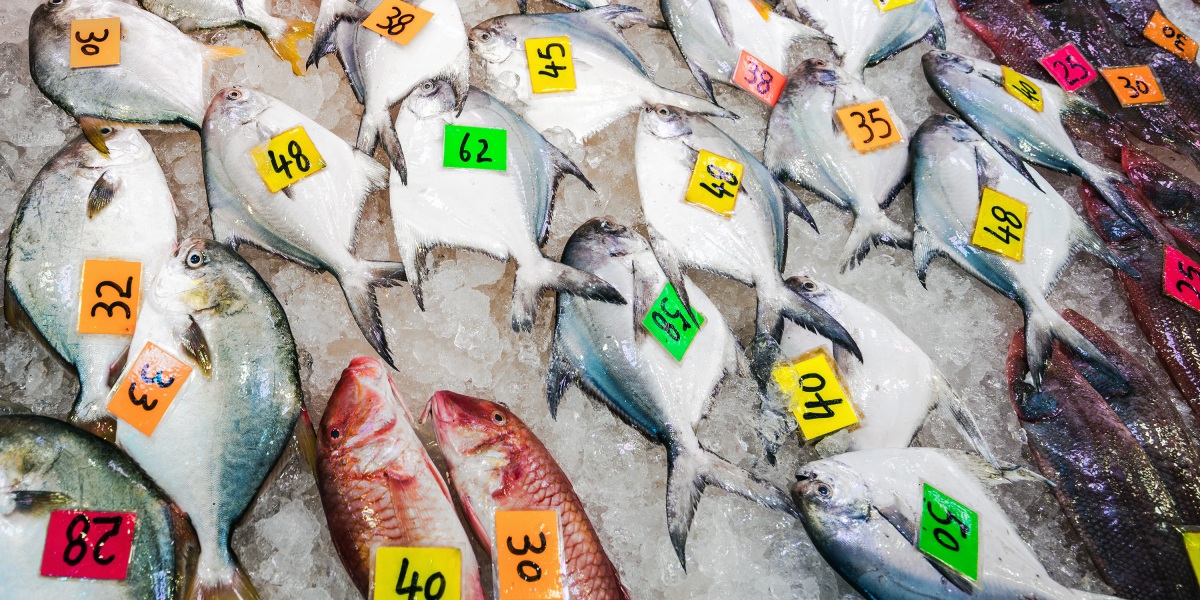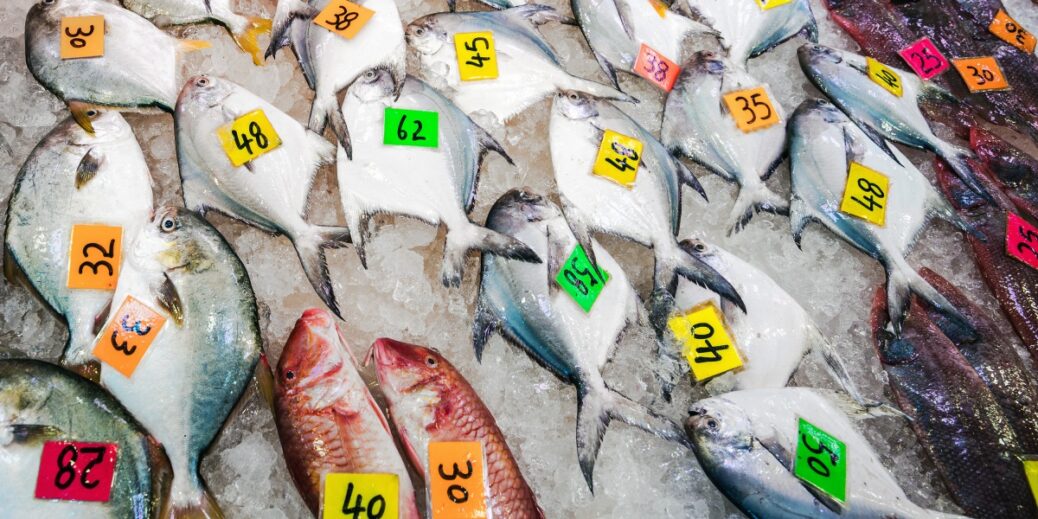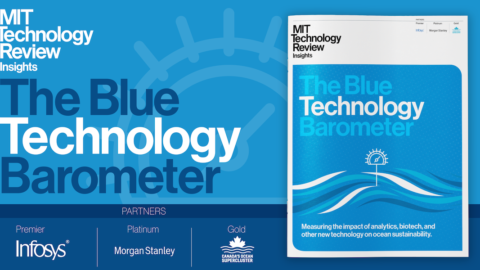
“The penalties for offenders can be harsh,” says Zhou Zhaomin, a policy expert on China’s wildlife trade at China West Normal University in Nanchong. Those trading in protected species can face up to 15 years imprisonment, and smuggling them in or out of China in large enough numbers could result in a life sentence.
But the implementation of the laws was poor. Several researchers told MIT Technology Review that it’s “an open secret” that illegal wildlife trade is rampant in China.
Indeed, Zhou and his colleagues conducted a survey between 2017 and 2019 that found that four markets in Wuhan, including Huanan, sold a combined total of nearly 48,000 wild animals of 38 species, almost all of which were sold alive, caged, and stacked in cramped, unhygienic conditions perfect for virus transmission. The animals—either wild-caught or farmed non-domesticated species—include species susceptible to both SARS-CoV-1 and SARS-CoV-2, such as civets, mink, badgers, and raccoon dogs.
That study, published in June in Scientific Reports, found that all of the wildlife trade the researchers surveyed was illegal. Many vendors sold protected species; none posted the required certificates indicating the source of the animals or that they were free of diseases.
This means that as soon as Huanan was implicated in early covid-19 cases, vendors selling live mammals, most likely illegally, would run away to avoid facing imprisonment, while law enforcement agencies are unlikely to admit such activities ever existed in the first place. Given this, it was unsurprising that the Chinese authorities found no leads regarding the sales of live animals at the Huanan market, says Harvard’s Hanage.
Restrictions on the wildlife trade were minimal in the aftermath of SARS, which gave scientists almost unlimited access to animals and traders in Guangdong’s wet markets—but even that wasn’t enough to help them pin down the source of SARS. While they quickly homed in on viruses in civets, badgers, and raccoon dogs that were more than 99% identical to SARS-CoV-1, subsequent investigations did not turn up widespread circulation of the virus, either in the wild or in farmed conditions. A dominant view is that civets got the virus during trading, most likely from bats that were bought and sold at the same time.
Now, 18 years later, the situation is strikingly similar. There appears to be no widespread circulation of SARS-CoV-2 in animals. None of the 80,000 or so samples tested by the Chinese team of the World Health Organization mission to hunt for the pandemic’s origins—including prime suspects such as pangolins, civets, badgers, and bamboo rats—contained the virus.
Nevertheless, many scientists still lean heavily toward the theory that wet markets played a critical role in triggering covid-19. Even though all eyes are on Yunnan and other parts of Southeast Asia as the most likely places of the pandemic’s origins, Hanage says “it’s not batshit crazy” to suggest that Wuhan’s Hubei province could have been where SARS-CoV-2 emerged naturally.
Indeed, scientists at the Wuhan Institute of Virology have found SARS-like coronaviruses in bats in Hubei. Even though they haven’t systematically tested farmed animals for coronavirus infection across the province, in a little-known study conducted in the aftermath of SARS, they found that the seven civets they tested in a farm in the province in 2004 all were infected with relatives of SARS-CoV-1. Several research teams in China and in the US are trying to figure out where the animals got the virus, whether coronavirus infection among civets is more common than previously thought, and what impact that might have on our understanding of the origins of covid-19.
Constant spillover
But without evidence of an animal infected with a coronavirus that is more than 99% identical to SARS-CoV-2, some scientists have continued to argue against natural origins.
One such critic is Alina Chan, a molecular biologist at the Broad Institute of MIT and Harvard (this publication is owned by MIT, but editorially independent from it). The central question, she said in a recent webinar organized by Science magazine, is how the virus got to Wuhan from caves more than a thousand miles away in China or other parts of Southeast Asia. “There is a very strong conduit of scientists in Wuhan going down to these places where they [knew] they would find SARS viruses, bringing them all the way into Wuhan city, like thousands of miles,” she said. There is no evidence, however, of such routes for the wildlife trade, she adds.
Such lack of clarity plagues the origins of SARS as well, says Linfa Wang, director of Duke-National University Singapore’s emerging infectious diseases program. The cave that yielded the closest bat relative of SARS-CoV-1 is nearly 1,000 miles away from the Guangdong market where the first SARS cases emerged—similar to the distance between Wuhan and the site where one of the closest bat relatives of SARS-CoV-2 has been discovered.
And it’s increasingly clear that people in close contact with wildlife are infected by coronaviruses much more frequently than was previously thought.
“[Huanan] is vastly more likely than other scenarios based on what we now know.”
Michael Worobey
Studies show that up to 4% of people who live close to bats and work closely with wildlife in southern China have been infected by deadly animal-borne viruses, including coronaviruses. A Laotian and French team, which discovered the closest relatives of SARS-CoV-2, found that one in five bat handlers in Laos had antibodies against those coronaviruses.
The majority of those spillover infections go extinct of their own accord, researchers say. In a study published in Science in April, Worobey and his colleagues show in computer simulation that for the spillover of SARS-CoV-2 to trigger major epidemics, an urban setting is critical —without that, it would die out very quickly.
“It’s hundreds, if not thousands, of times more likely” that a wildlife trader who was exposed to a SARS-CoV-2 progenitor—either from bats or another animal species—brought the contagion to Huanan than it is that a researcher who went to collect samples from bats came back to Wuhan with the pathogen and then brought it to Huanan, says Wang.
Worobey agrees. Based on many lines of evidence, he is now convinced not only that the pandemic’s connection to the Huanan market is real, but that it is where a SARS-CoV-2 progenitor jumped from an animal to humans. “That’s vastly more likely than any other scenarios based on what we now know,” he says.
Preliminary results from ongoing work by his group and others will help strengthen the case further, he adds: “They all point in the same direction.”
Reporting for this article was supported by a grant from the Pulitzer Center.




Recent Comments